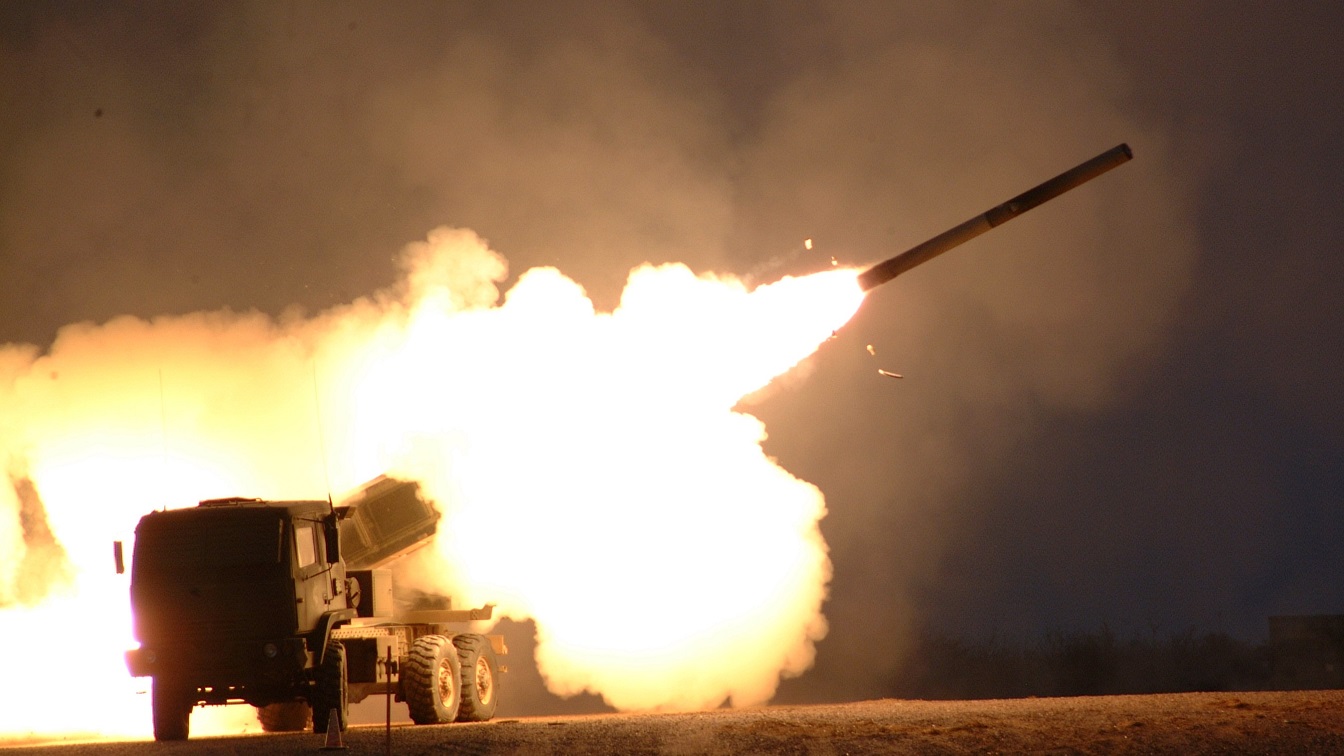Could Ukraine Have Its Very Own Battle of the Bulge? In December 1944, U.S. forces and the armies of the Allies were firmly entrenched along a wide front in western France and Belgium.
They had been on the offensive since the invasion of Normandy that June.
The Germans launched a large-scale, surprise offensive to push them back.
After initial success, Hitler’s troops were worn down by the sheer size of the Allied force and their relentless industrial capacity to wage war.
Ukraine is possibly on the cusp of launching an offensive under similar circumstances and with nearly the same objective.
Will Ukraine’s troops catch the Russians off guard and successfully drive Putin’s forces backwards, or will their attack play out largely as the German effort did in 1944? An assessment of the conditions of both operations does not bode well for Ukraine.
A Daunting Line to Take
A look at the raw assets available for Ukraine’s offensive paints a hopeful picture. According to NATO Secretary General Jens Stoltenberg, Ukraine in recent months has received over 1,500 armored vehicles, 230 tanks, and a considerable stockpile of ammunition.
Included in that total are more than 100 modern U.S. Bradley Fighting Vehicles and 90 armored Stryker combat vehicles, soon to be joined by 31 Abrams M1A1 tanks. Up to 30,000 Ukrainian troops are nearing the completion of training by Western militaries, and these will form the backbone of what Stoltenberg claims are “more than nine new Ukrainian armored brigades,” putting Ukraine “in a strong position to continue to retake occupied territory.”
But this is only half the equation. There is also a Russian side.
Russian forces have spent months building elaborate, multi-echeloned defensive works that stretch across the breadth and depth of their side of the 1,000-km front line. Ukrainian intelligence projects that there are 300,000 Russian troops in Ukraine, 150,000 of which are positioned in the most likely direction of a Ukrainian attack.
Further, Moscow is in the process of attempting to recruit an additional 400,000 troops by the end of this year. Regardless of the actual number of Russian troops, the 35,000 Ukrainian troops reportedly poised to strike Russian lines will face long odds. Though the scale is different, the fundamentals at play in Ukraine are strikingly similar to what existed west of the German border in December 1944.
Ukraine: Setting Proper Goals
Six months after the Allies successfully invaded Nazi-held Europe at Normandy, their drive had largely stalled. Germany had been pushed back relentlessly across France and parts of Belgium, but it had established a largely static line of contact. Fearing the larger numbers on the Allied side — in conjunction with the industrial capacity of the West — Hitler calculated that he had no choice but to launch a sudden counteroffensive to try and drive the Allies back.
He didn’t believe the offensive would destroy the Western alliance, but he did hope to push them back to the port city of Antwerp and cut the Allied force in two. Covertly assembling an attack force of over 200,000 men, 1,000 tanks, and 1,900 artillery pieces, Hitler launched his surprise attack on Dec. 16, 1944. Initially, the German troops caught the defenders by surprise, and they achieved considerable advances.
By Christmas Day, the Germans had driven about 45 miles into enemy territory. But the losses they suffered, their shortfalls in ammunition and fuel, and the reinforcements sent into battle by the U.S. Army stopped Germany’s drive. By the end of January 1945, the Nazi troops had been pushed back to their starting point. It would be the last offensive the Germans would muster.
For many of the same reasons Germany’s offensive failed, Ukraine will face a grave threat if it attacks this spring or summer.
Ukraine has a strike force that has been trained for a few months by NATO military personnel. It also has some modern tanks and armor, and it has the benefit of fighting on terrain it knows well. But to succeed, Ukraine will have to conduct the most difficult task in modern land warfare: a combined arms operation into the teeth of a dug-in enemy force that is prepared for an attack. Additionally, Ukraine will be short of artillery ammunition, and it will have limited airpower and minimal air defense. Further, defenders will outnumber attackers.
To avoid Germany’s fate, Ukrainian forces will need to set limited, achievable objectives and ensure they don’t penetrate further into Russia’s defenses than they can sustain. If Ukraine achieves a major breakthrough, they will be tempted to push deeper into Russian-held land. Yet if they overextend themselves, Ukrainian forces, too, might succumb to a Russian counterattack as reserves are inevitably thrown into battle.
Militarily speaking, Ukraine’s army is not large enough, armed enough, or trained enough yet to contemplate a major operation driving Russia out of large portions of occupied territory. Kyiv must set limited objectives that can be achieved and sustained with the forces they have. This can buy them time to either seek a negotiated settlement on terms favorable to Kyiv, or to build a new, larger, more comprehensive strike force by next spring or summer. Trying to meet a more ambitious goal could lay the foundation for a Ukrainian military disaster.
MORE: The War in Ukraine Is About to Explode
MORE: Does Putin Have Cancer?
A 19FortyFive Contributing Editor, Daniel L. Davis is a Senior Fellow for Defense Priorities and a former Lt. Col. in the U.S. Army who deployed into combat zones four times. He is the author of “The Eleventh Hour in 2020 America.”

